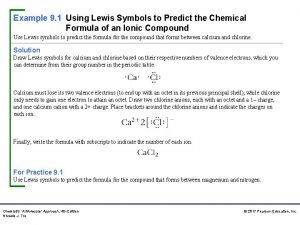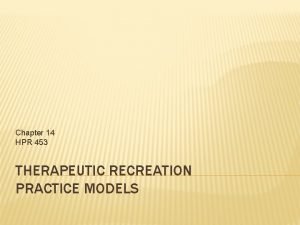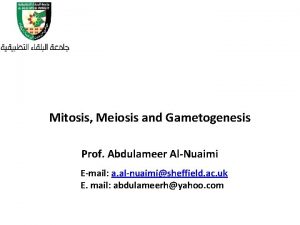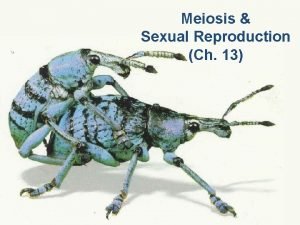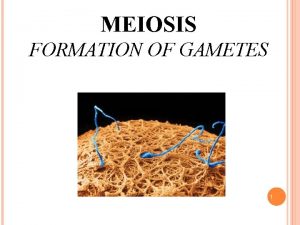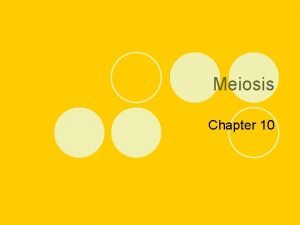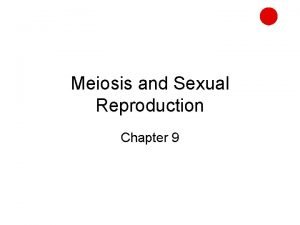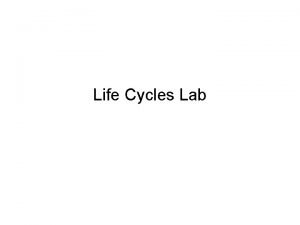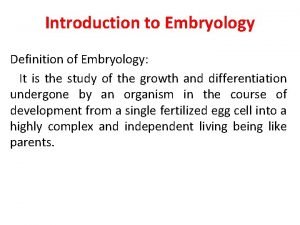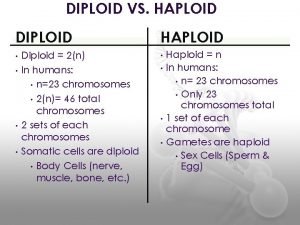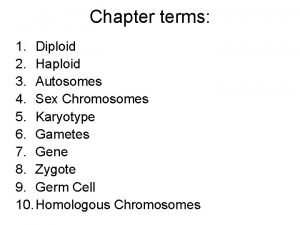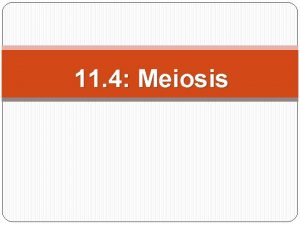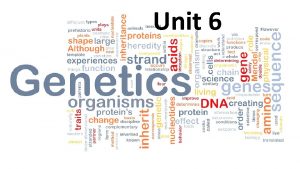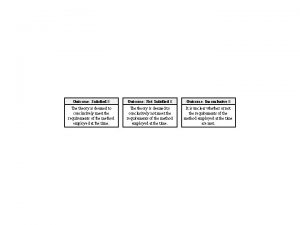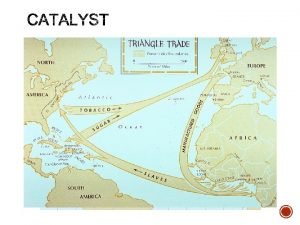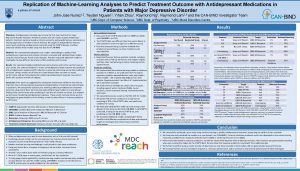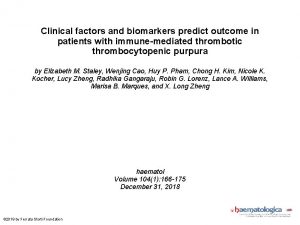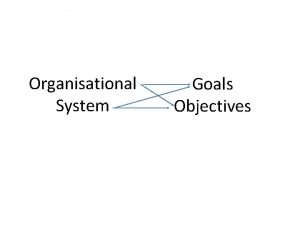Onelocus diploid model Goals Predict the outcome of



![Model conditions : allele frequencies p[t] q[t] initial genotype frequencies p[t] q[t] After selection? Model conditions : allele frequencies p[t] q[t] initial genotype frequencies p[t] q[t] After selection?](https://slidetodoc.com/presentation_image_h/04ebe77f66cb1dc4a59f8b2b40031229/image-4.jpg)






















- Slides: 26

One-locus diploid model Goals: Predict the outcome of selection: when will it result in fixation, when in polymorphism Understand the effect of dominance on the rate of evolution

Back to the Foré Genotype MM juvenile adult 31 4 MV 72 23 VV 37 3 If selection continues to act in the same way, what will be the outcome?

One-locus diploid model Selection acts in the diploid phase random mating, no migration, and no mutation large population
![Model conditions allele frequencies pt qt initial genotype frequencies pt qt After selection Model conditions : allele frequencies p[t] q[t] initial genotype frequencies p[t] q[t] After selection?](https://slidetodoc.com/presentation_image_h/04ebe77f66cb1dc4a59f8b2b40031229/image-4.jpg)
Model conditions : allele frequencies p[t] q[t] initial genotype frequencies p[t] q[t] After selection?

Genotype frequencies after selection f’(AA) f’(Aa) f’(aa)

Allele frequencies after selection f’(AA) = f’(Aa) = 100% f’(A) = 50% f’(aa) = 100% f’(a) =

One-locus diploid model p(t+1) = p(t)2 WAA + p(t)q(t)Waa p(t) 2 WAA + 2 p(t)q(t)WAa + q(t)2 Waa

One-locus diploid model Forms of selection Directional Selection: Favoring allele A Favoring allele a Heterozygote advantage Heterozygote disadvantage (Which forms of selection were present in the haploid selection model? )

Directional selection

Directional selection: terms WAA = 1 WAa = 1 + hs Waa = 1 + s s: h:

Dominance

Dominance Imagine two alleles fighting over the phenotype (in this case, fitness(: where does the heterozygote end up? WAA WAa Waa 1 1 + s/2 1+s

Dominance Imagine two alleles fighting over the phenotype (in this case, fitness(: where does the heterozygote end up? WAA 1 WAa= Waa 1+s

Dominance Imagine two alleles fighting over the phenotype (in this case, fitness(: where does the heterozygote end up? WAA WAa Waa 1 1 + hs 1 + s

Dominance Imagine two alleles fighting over the phenotype (in this case, fitness(: where does the heterozygote end up? WAA WAa 1 1 + hs Waa 1+s

Dominance Imagine two alleles fighting over the phenotype (in this case, fitness(: where does the heterozygote end up? WAA=WAa 1 Waa 1+s

Dominance example Sickle cell anemia: HH = healthy red blood cells Hh = sickle cell trait hh = sickle cell anemia Describe the dominance of H for: blood oxygen capacity? malaria resistance?

Dominance and selection p(t+1) = p(t)2 WAA + p(t)q(t)WAa p(t) 2 WAA + 2 p(t)q(t)WAa + q(t)2 Waa If A is dominant and rare: If A is dominant and common:

Selection against a common allele If WAA < WAa < Waa, selection favors the a allele

Heterozygote advantage WAa = 1; Waa = 0. 9; WAA= 0. 8 WAa > Waa; WAa > WAA

Heterozygote disadvantage WAa = 0. 9; Waa = 1. 0; WAA= 0. 95 WAa < Waa; WAa < WAA

Equilibria What are the equilibria?

Behaviour at polymorphic equilibrium

One-locus diploid model Examples: Sickle-cell anemia

One-locus diploid model Examples: Sickle-cell anemia For the Nigerian population studied: WHH = 0. 88 WHh = 1 Whh = 0. 14 What is the expected equilibrium frequency of the non-mutant allele (H)?

Readings and questions References: Mead, S. , M. P. H. Stumpf, et al. 2003. Balancing selection at the prion protein gene consistent with prehistoric kurulike epidemics. Science 300: 640 -643. Reading: Freeman and Herron, chapter 6 (chapter 5) Questions: 1. What are the relative fitnesses for the three Foré genotypes? (Use the juvenile data to estimate genotype frequencies prior to selection). What is the expected outcome of selection? Explain. 2. Imagine that a population experienced malaria but lacked the sickle -cell allele. Using the Nigerian fitness data, sketch the evolution of the population if a new sickle cell mutation arose in the population. 3. You have identified a locus that influences survival in sparrows. The relative fitnesses for each genotype are: WAA = 1. 0; WAa = 0. 9; Waa = 0. 6. Describe the relationship between the two alleles in terms of dominance.
 Predict the outcome
Predict the outcome Strategic goals tactical goals operational goals
Strategic goals tactical goals operational goals Strategic goals tactical goals operational goals
Strategic goals tactical goals operational goals Ocn- resonance
Ocn- resonance General goals and specific goals
General goals and specific goals Examples of generic goals and product-specific goals
Examples of generic goals and product-specific goals Therapeutic recreation models
Therapeutic recreation models Produces diploid cells
Produces diploid cells If a diploid egg was produced by mitosis
If a diploid egg was produced by mitosis Prophase 2
Prophase 2 Primary oocyte haploid or diploid
Primary oocyte haploid or diploid Why is meiosis important?
Why is meiosis important? What is diploid and haploid
What is diploid and haploid Primary oocyte haploid or diploid
Primary oocyte haploid or diploid Primary oocyte haploid or diploid
Primary oocyte haploid or diploid Advantage of sexual reproduction
Advantage of sexual reproduction Diplod
Diplod Haploid diploid unterschied
Haploid diploid unterschied Meiosis in oogenesis
Meiosis in oogenesis Diploid vs haploid number
Diploid vs haploid number Are diploid cells produced in meiosis
Are diploid cells produced in meiosis Cell with 4 chromosomes
Cell with 4 chromosomes Diploid cells
Diploid cells Privet shrubs and humans each have a diploid number of 46
Privet shrubs and humans each have a diploid number of 46 Privet shrubs and humans each have a diploid number of 46
Privet shrubs and humans each have a diploid number of 46 Daniel svozil
Daniel svozil Dna structure and replication pogil
Dna structure and replication pogil



